Lab-to-Lab: US-Russian Lab-to-Lab Collaboration Story [Archived]
- Home
- Joint Verification Experiment
- Science Collaboration
- Nuclear Materials
- Nuclear Weapons
- Nuclear Experts
- What’s New
The Human Dimension to Kazakhstan’s Plutonium Mountain
Siegfried S. Hecker | April 2023
“As we drove deeper into the Semipalatinsk Nuclear Test Site, we found kilometer-long trenches that were clearly the work of professional thieves using industrial earth-moving equipment, rather than hand-dug trenches made by nomad copper-cable- searching amateurs on camelback. Our Kazakh hosts said they could do nothing to stop these operations. In fact, they weren’t sure they had a legal right to stop them from “prospecting” on the site.” […]
Preparation of this article was funded by the Stanley Center as part of their project, “Adventures in Nuclear Risk Reduction”. The product of the project was a website which can be found at https://riskreduction.stanleycenter.org/
Cooperation in a Closed Nuclear City
James W. Toevs | April 2023
“Jerome Hines, the basso profundo whose 41-year career with the Metropolitan Opera was the longest of any principal singer, sang with our large church choir in the Christmas 1992 performance of Handel’s Messiah. During a break in a rehearsal, several of us were talking with him, and somehow the conversation turned to the Cuban Missile Crisis.” […]
Preparation of this article was funded by the Stanley Center as part of their project, “Adventures in Nuclear Risk Reduction”. The product of the project was a website which can be found at https://riskreduction.stanleycenter.org/
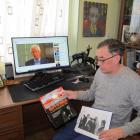 Snezhinsk scientist’s surprise in recognizing his photo on the book cover
Snezhinsk scientist’s surprise in recognizing his photo on the book cover
Friday, April 24, 2020
Some time ago, Vladimir Shmakov, scientist from Snezhinsk’s VNIITF, walked past a book display of his Institute library when something caught his eye. He stopped to take a closer look on the bold-colored cover of Siegfried Hecker’s book Doomed to Cooperate showcased on the stand. The cover featured Yuli Khariton, the legendary scientific head of the Soviet bomb program, ready to shake the outstretched hand of Sig Hecker, Khariton’s guest from Los Alamos. It was a perfectly captured moment in history, but to Vladimir, the photo looked just too familiar.
This post is about: The Story of a Cover Photo
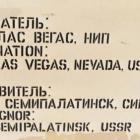 Snezhinsk scientists congratulate US colleagues on the 30th Anniversary of JVE
Snezhinsk scientists congratulate US colleagues on the 30th Anniversary of JVE
Friday, October 26, 2018
2018 marks thirty years from 1988, the year when the US and the Soviet Union held the Joint Verification Experiment, an entirely new way to approach issues on the agenda of US-Soviet arms control process. JVE left a profound imprint on the US and Soviet/Russian nuclear weapons communities. In 2013, the DOE and Rosatom sent their delegations to the Nevada Test Site to celebrate the 25 anniversary of this unique event. In 2018, the most notable feature of the 30th anniversary has been official silence on both sides. The spirit of JVE is still alive though – in the hearts and mind of the scientists.
This post is about: 30 Years Since a Historic Breakthrough
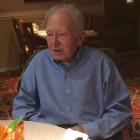 From classified to international: Harry Dreicer on early years of U.S.-Soviet collaboration in fusion physics
From classified to international: Harry Dreicer on early years of U.S.-Soviet collaboration in fusion physics
Friday, July 6, 2018
Los Alamos physicist Harry Dreicer tells a story of early international exchanges in the field of thermonuclear fusion. In 1958, at the time of second Conference on the Peaceful Uses of Atomic Energy in Geneva, it seemed that the target could be soon within reach. The US Atomic Energy Commission (AEC) was intent on producing a strong show of success in Geneva. Dreicer recalls that the AEC Chair “even offered a prize—I think it was like a million dollars or something—to the group that could make fusion by, I think, the autumn of ’58.” After 60 years of concerted international effort, the target still does not have a clear end date. Dreicer tells about first contacts with the Soviet fellow physicists, impressive on the theoretical front but “scared” to socially engage with the Americans in the early era of international science exchanges.
This post is about: Harry Dreicer in conversation with Sig Hecker
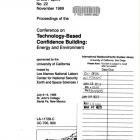 “We will continue to evolve to a better situation between the US and Russia”
“We will continue to evolve to a better situation between the US and Russia”
Wednesday, December 20, 2017
Molly Cernicek knows first-hand that change is never linear and smooth. When Russia just started the post-Cold War transition in its defense industrial sector, Molly was among those who explored ways to turn its challenges into commercial opportunities. Looking back a quarter of century later, Molly offers her view of the pains and gains of technology commercialization in Russia.
Even more meaningful than the lessons of this effort was “building new relationships and opportunities that were so much more personal and full of potential than could have ever been imagined during the Cold War.” Read the full account of Molly Cernicek’s personal part in the Russian transition and the hope she holds for the future.
This post is about: Conversation with Molly Cernicek
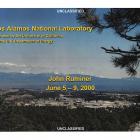 “We did not spill the beans”
“We did not spill the beans”
Friday, October 6, 2017
John Ruminer, who formerly led nuclear weapons engineering in LANL, offers a definitive “Yes!” to the question of whether the U.S.-Russian cooperation on nuclear weapons safety must continue today. In 1999-2000, Ruminer was the U.S. organizer of a one-of-a-kind U.S.-Russian workshop on nuclear weapons dismantlement. “I wanted the workshop to happen,” says Ruminer in his interview. “What an opportunity, a history-making opportunity this was, and so I wanted it to happen.”
Read the full interview on how this workshop was unique in more than one way
…
This post is about: John Ruminer in conversation with Paul White, Sig Hecker and Alla Kassianova
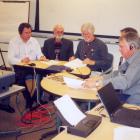 Ensuring nuclear weapons safety requires the joint effort of experts from all nuclear weapon powers
Ensuring nuclear weapons safety requires the joint effort of experts from all nuclear weapon powers
Monday, August 14, 2017
To be reliable, the nuclear deterrent must first of all be … safe. The signing of the WSSX Agreement between the U.S. DOE and the Russian Minatom in the end of 1994 allowed the U.S. and Russian labs to move the collaboration into the areas directly related to the safety of the weapons – but exclusively remaining on the non-classified ground. Today we publish original texts and photographs that complement the papers on WSSX cooperation in Chapter 3 of the Doomed to Cooperate book.
…
This post is about: WSSX: View from Sarov. Online Exclusive Account
Capturing events that give one’s life a new meaning
Saturday, July 15, 2017
Irvin Lindemuth, a scientist who pioneered in Magnetized Target Fusion (MTF) and for many years provided technical leadership for a scientific collaboration between Los Alamos and its Russian counterpart, the All-Russian Scientific Research Institute of Experimental Physics (VNIIEF) at Sarov, shared his favorite memories of interactions with the Russians that span over 25 years. These memories amount to much more than a neatly organized account of scientific and cultural explorations, extraordinary and unprecedented as they were.
…
This post is about: Reminiscences of Russia
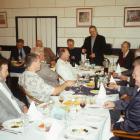 The art of making a memorable toast
The art of making a memorable toast
Wednesday, June 21, 2017
If one could pick a single cultural discovery that was shared – and enjoyed – by all American lab-to-lab specialists on the Russian soil, that would be the importance of a good toast. Toasts are part of any shared meal of food and drinks and serve as a vehicle for collegial exchange of mutual appreciation, personal reflections, impressions and expectations, invariably spiced by friendly humor.
…
This post is about: A Poem by Walt Atchison
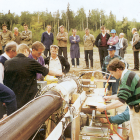 Poetry on the margins of science
Poetry on the margins of science
Wednesday, June 7, 2017
For reasons even he cannot explain, the visits to the Sarov English Club prompted Brodie Anderson, a key LANL team technician, to write poetry.
…
This post is about: Poems by Brodie Anderson – American Poems in Sarov
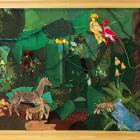 New Chance for an old friendship
New Chance for an old friendship
Thursday, June 1, 2017
Paul Whites tells about a friendship that grew out of the lab-to-lab and endured through the distance and time.
…
This post is about: Second Chances
